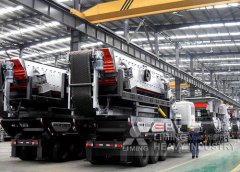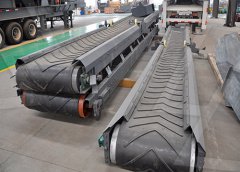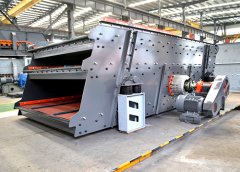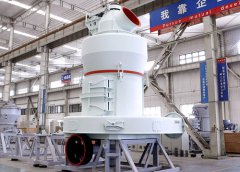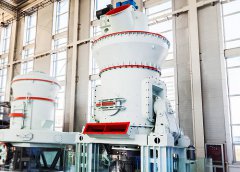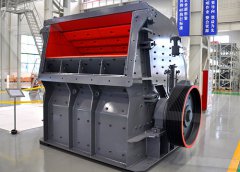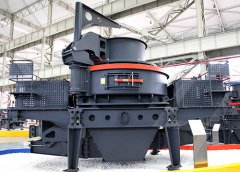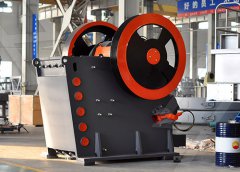
Physical separation of iron ore: magnetic separation
This chapter first introduces the principles and recent advances in magnetic separation technology in processing iron ore, followed by examples of flow sheets for magnetite and oxidized ores. 9.2. Principle of magnetic separation. 9.2.1.Often, a chemical separation is the only method able to remove phosphorus from iron ores. Phosphorus can occur as phosphorus-containing minerals (e.g., apatite) and being finely dispersed in hematite in oolitic ironstones or in goethite in goethite–hematite banded iron formation ores.Chemical separation of iron ore ScienceDirect
احصل على السعر
Physiochemical separation of iron ore ScienceDirect
The two major aluminum-containing minerals in iron ore are kaolinite (Al2 (Si 2 O 5 ) (OH) 4) and gibbsite (Al (OH) 3 ). Some progress has been made in using flotation to separate kaolinite from hematite. High levels of phosphorus in iron ore attract a penalty because this makes steel brittle.In this study, a process to separate manganese and iron from manganiferous iron ores by reductive acid leaching followed by magnetic separation was conceived and experimentally tested. In the leaching process, sulfuric acid was used as lixiviant and oxalic acid was used as reductant.Separation of Fe and Mn from Manganiferous Iron Ores via
احصل على السعر
Developments in the physiochemical separation of iron ore
Desliming is an essential step for a successful separation in the cationic flotation of iron ores for similar reasons as in the anionic flotation of iron ores (i.e., the presence of slimes leads to high reagent consumption due to their high surface area; slime coatings on the larger particles, governed by electrostatic interaction, interfereThe most applicable physical separation processes for iron ore described in more detail in this chapter are gravity separation techniques such as dense medium separation, jigging, upflow classification/hindered bed settling, and spiraling.Developments in nonmagnetic physical separation
احصل على السعر
Development of roasting-acid leaching-magnetic separation
In this paper, an improved Fe recovery method from the refractory fine-grained iron ores was proposed, and iron can be stepwise recovered by microwave-assisted reduction roasting with the addition of Na2SO4, followed by acid leaching of roasted ore and then magnetic separation of leached ore.Often, a chemical separation is the only method able to remove phosphorus from iron ores. Phosphorus can occur as phosphorus-containing minerals (e.g., apatite) and being finely dispersed in hematite in oolitic ironstones or in goethite in Iron Ore ScienceDirect
احصل على السعر
Separation and recovery of iron and manganese from high-iron
Sodium salts were used in the reduction roasting and magnetic separation process to separate and recover iron and manganese from the high-iron manganese oxide ores to utilize the complex ores. Results showed that Na 2 S 2 O 3 was the most effective salt.In this study, to improve iron recovery from low-grade iron ores, preconcentration was performed, followed by two separation processes, namely, reverse flotation (RF) and suspension magnetization roasting-magnetic separation (SRM), which were selected for comparing their effects on Fe grade and Fe recovery.Improved iron recovery from low-grade iron ore by efficient
احصل على السعر
Physical separation of iron ore: magnetic separation
This chapter first introduces the principles and recent advances in magnetic separation technology in processing iron ore, followed by examples of flow sheets for magnetite and oxidized ores. 9.2. Principle of magnetic separation. 9.2.1.Often, a chemical separation is the only method able to remove phosphorus from iron ores. Phosphorus can occur as phosphorus-containing minerals (e.g., apatite) and being finely dispersed in hematite in oolitic ironstones or in goethite in goethite–hematite banded iron formation ores.Chemical separation of iron ore ScienceDirect
احصل على السعر
Physiochemical separation of iron ore ScienceDirect
The two major aluminum-containing minerals in iron ore are kaolinite (Al2 (Si 2 O 5 ) (OH) 4) and gibbsite (Al (OH) 3 ). Some progress has been made in using flotation to separate kaolinite from hematite. High levels of phosphorus in iron ore attract a penalty because this makes steel brittle.In this study, a process to separate manganese and iron from manganiferous iron ores by reductive acid leaching followed by magnetic separation was conceived and experimentally tested. In the leaching process, sulfuric acid was used as lixiviant and oxalic acid was used as reductant.Separation of Fe and Mn from Manganiferous Iron Ores via
احصل على السعر
Developments in the physiochemical separation of iron ore
Desliming is an essential step for a successful separation in the cationic flotation of iron ores for similar reasons as in the anionic flotation of iron ores (i.e., the presence of slimes leads to high reagent consumption due to their high surface area; slime coatings on the larger particles, governed by electrostatic interaction, interfereThe most applicable physical separation processes for iron ore described in more detail in this chapter are gravity separation techniques such as dense medium separation, jigging, upflow classification/hindered bed settling, and spiraling.Developments in nonmagnetic physical separation
احصل على السعر
Development of roasting-acid leaching-magnetic separation
In this paper, an improved Fe recovery method from the refractory fine-grained iron ores was proposed, and iron can be stepwise recovered by microwave-assisted reduction roasting with the addition of Na2SO4, followed by acid leaching of roasted ore and then magnetic separation of leached ore.Often, a chemical separation is the only method able to remove phosphorus from iron ores. Phosphorus can occur as phosphorus-containing minerals (e.g., apatite) and being finely dispersed in hematite in oolitic ironstones or in goethite in Iron Ore ScienceDirect
احصل على السعر
Separation and recovery of iron and manganese from high-iron
Sodium salts were used in the reduction roasting and magnetic separation process to separate and recover iron and manganese from the high-iron manganese oxide ores to utilize the complex ores. Results showed that Na 2 S 2 O 3 was the most effective salt.In this study, to improve iron recovery from low-grade iron ores, preconcentration was performed, followed by two separation processes, namely, reverse flotation (RF) and suspension magnetization roasting-magnetic separation (SRM), which were selected for comparing their effects on Fe grade and Fe recovery.Improved iron recovery from low-grade iron ore by efficient
احصل على السعر
Physical separation of iron ore: magnetic separation
This chapter first introduces the principles and recent advances in magnetic separation technology in processing iron ore, followed by examples of flow sheets for magnetite and oxidized ores. 9.2. Principle of magnetic separation. 9.2.1.Often, a chemical separation is the only method able to remove phosphorus from iron ores. Phosphorus can occur as phosphorus-containing minerals (e.g., apatite) and being finely dispersed in hematite in oolitic ironstones or in goethite in goethite–hematite banded iron formation ores.Chemical separation of iron ore ScienceDirect
احصل على السعر
Physiochemical separation of iron ore ScienceDirect
The two major aluminum-containing minerals in iron ore are kaolinite (Al2 (Si 2 O 5 ) (OH) 4) and gibbsite (Al (OH) 3 ). Some progress has been made in using flotation to separate kaolinite from hematite. High levels of phosphorus in iron ore attract a penalty because this makes steel brittle.In this study, a process to separate manganese and iron from manganiferous iron ores by reductive acid leaching followed by magnetic separation was conceived and experimentally tested. In the leaching process, sulfuric acid was used as lixiviant and oxalic acid was used as reductant.Separation of Fe and Mn from Manganiferous Iron Ores via
احصل على السعر
Developments in the physiochemical separation of iron ore
Desliming is an essential step for a successful separation in the cationic flotation of iron ores for similar reasons as in the anionic flotation of iron ores (i.e., the presence of slimes leads to high reagent consumption due to their high surface area; slime coatings on the larger particles, governed by electrostatic interaction, interfereThe most applicable physical separation processes for iron ore described in more detail in this chapter are gravity separation techniques such as dense medium separation, jigging, upflow classification/hindered bed settling, and spiraling.Developments in nonmagnetic physical separation
احصل على السعر
Development of roasting-acid leaching-magnetic separation
In this paper, an improved Fe recovery method from the refractory fine-grained iron ores was proposed, and iron can be stepwise recovered by microwave-assisted reduction roasting with the addition of Na2SO4, followed by acid leaching of roasted ore and then magnetic separation of leached ore.Often, a chemical separation is the only method able to remove phosphorus from iron ores. Phosphorus can occur as phosphorus-containing minerals (e.g., apatite) and being finely dispersed in hematite in oolitic ironstones or in goethite in Iron Ore ScienceDirect
احصل على السعر
Separation and recovery of iron and manganese from high-iron
Sodium salts were used in the reduction roasting and magnetic separation process to separate and recover iron and manganese from the high-iron manganese oxide ores to utilize the complex ores. Results showed that Na 2 S 2 O 3 was the most effective salt.In this study, to improve iron recovery from low-grade iron ores, preconcentration was performed, followed by two separation processes, namely, reverse flotation (RF) and suspension magnetization roasting-magnetic separation (SRM), which were selected for comparing their effects on Fe grade and Fe recovery.Improved iron recovery from low-grade iron ore by efficient
احصل على السعر
